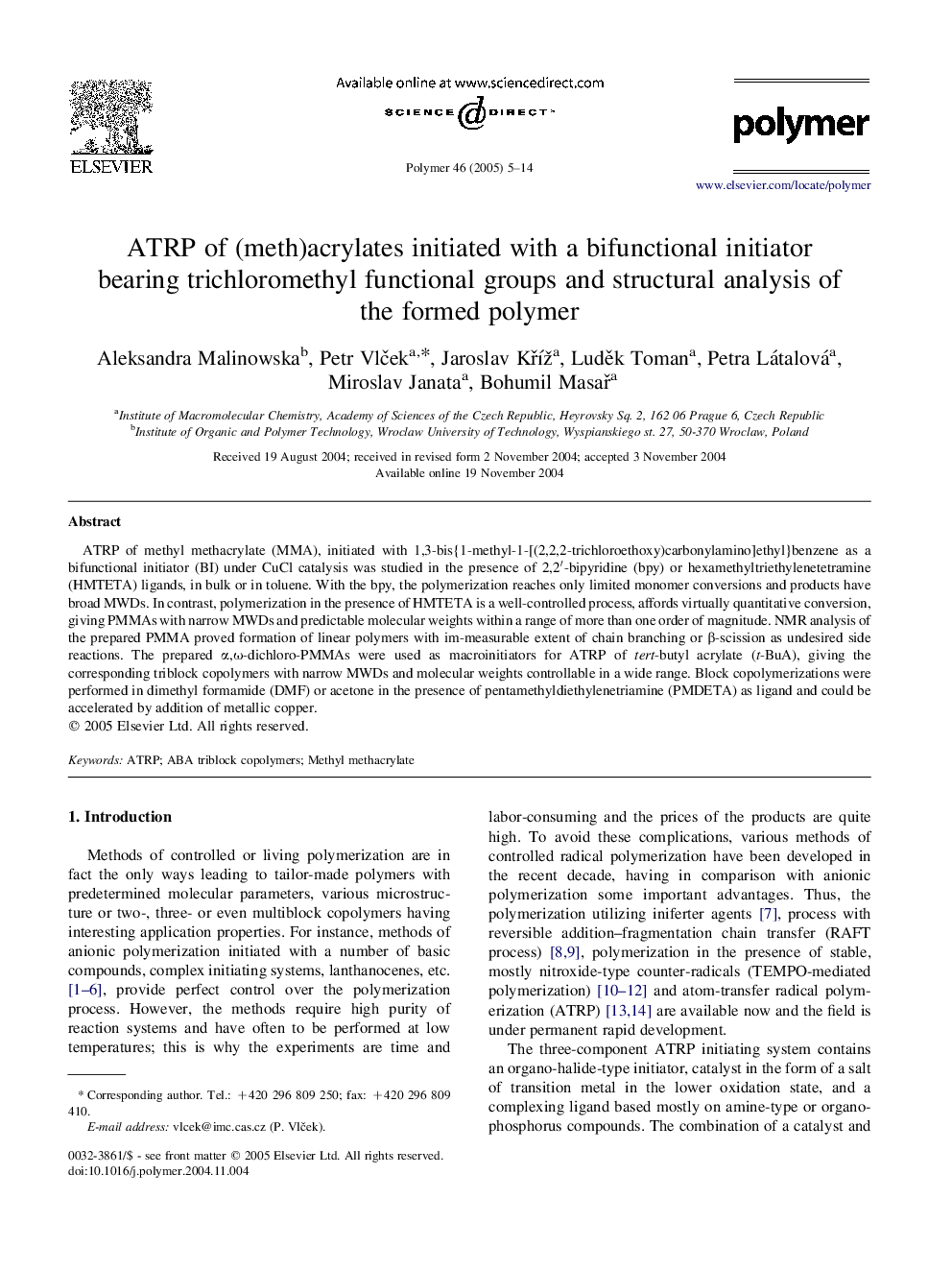| Article ID | Journal | Published Year | Pages | File Type |
|---|---|---|---|---|
| 9559751 | Polymer | 2005 | 10 Pages |
Abstract
ATRP of methyl methacrylate (MMA), initiated with 1,3-bis{1-methyl-1-[(2,2,2-trichloroethoxy)carbonylamino]ethyl}benzene as a bifunctional initiator (BI) under CuCl catalysis was studied in the presence of 2,2â²-bipyridine (bpy) or hexamethyltriethylenetetramine (HMTETA) ligands, in bulk or in toluene. With the bpy, the polymerization reaches only limited monomer conversions and products have broad MWDs. In contrast, polymerization in the presence of HMTETA is a well-controlled process, affords virtually quantitative conversion, giving PMMAs with narrow MWDs and predictable molecular weights within a range of more than one order of magnitude. NMR analysis of the prepared PMMA proved formation of linear polymers with im-measurable extent of chain branching or β-scission as undesired side reactions. The prepared α,Ï-dichloro-PMMAs were used as macroinitiators for ATRP of tert-butyl acrylate (t-BuA), giving the corresponding triblock copolymers with narrow MWDs and molecular weights controllable in a wide range. Block copolymerizations were performed in dimethyl formamide (DMF) or acetone in the presence of pentamethyldiethylenetriamine (PMDETA) as ligand and could be accelerated by addition of metallic copper.
Related Topics
Physical Sciences and Engineering
Chemistry
Organic Chemistry
Authors
Aleksandra Malinowska, Petr VlÄek, Jaroslav KÅÞ, LudÄk Toman, Petra Látalová, Miroslav Janata, Bohumil MasaÅ,
